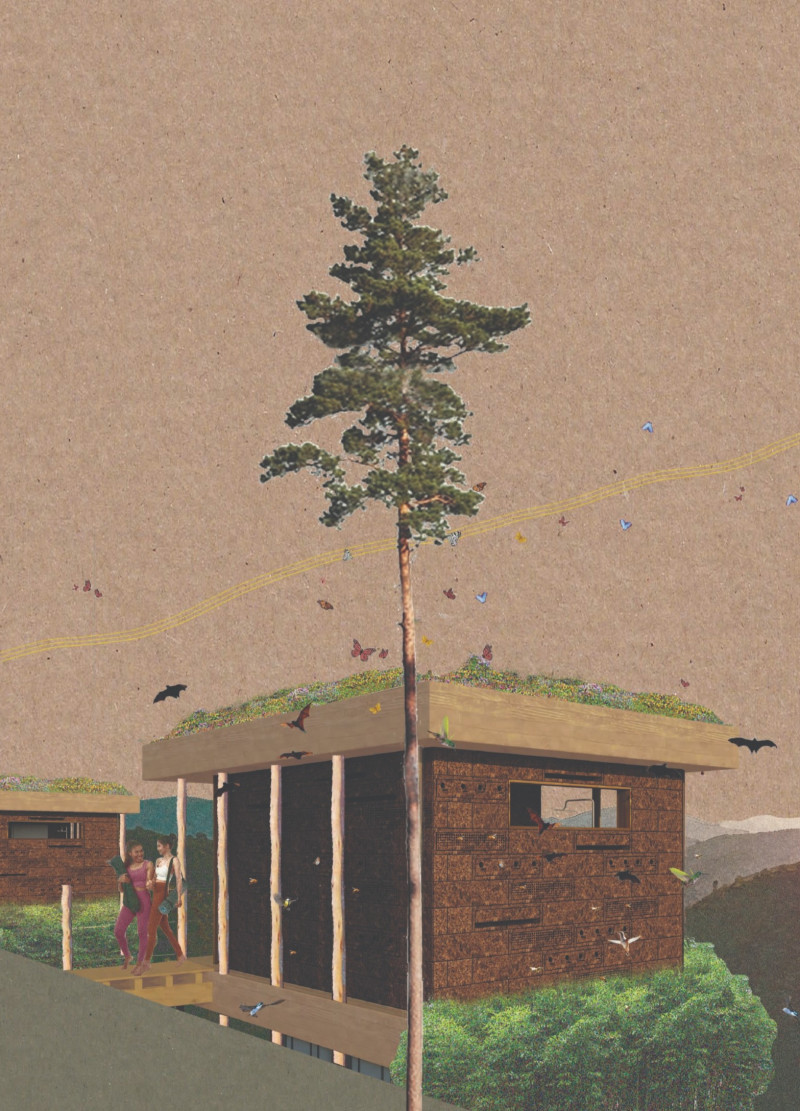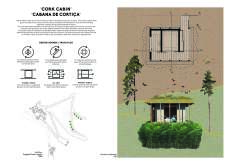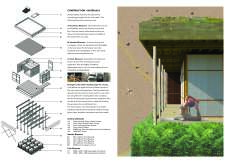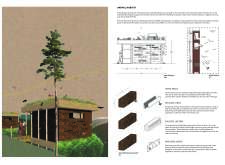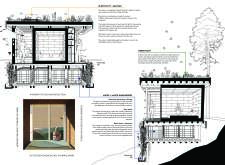5 key facts about this project
The Cork Cabin 'Cabana de Cortiça' is located at Vale de Moses in Portugal. It is designed to connect visitors with the natural surroundings while promoting mindfulness and reflection. The design focuses on ecological sustainability and the importance of local biodiversity. The cabin serves not only as a shelter but as a space where guests can experience and learn about the environment.
Structure and Form
The design of the cabin features a structure that appears to float between the floor and roof. This lightweight form gives the interior a spacious and airy feeling. Large openings allow light to fill the space and frame views of the outside landscape. The relationship between indoor and outdoor areas is important, as it invites nature to become part of the living experience.
Ecological Integration
The cabin includes areas specifically designed for local wildlife, emphasizing the value of biodiversity. These animal habitats promote coexistence, allowing visitors to observe and appreciate the local ecosystem. By integrating wildlife spaces into the design, the cabin fosters a sense of responsibility toward preserving nature.
Sustainable Materials and Systems
Materials used in the construction reflect the project's commitment to sustainability. Expanded cork bricks provide insulation and are lightweight, supporting the local cork industry. Local wood, such as pine and eucalyptus, is also used, making the cabin fit within its environment. The design relies on off-grid systems for energy and water, utilizing solar power and rainwater harvesting to minimize environmental impact.
Functional Features
The cabin manages waste in ways that support its eco-friendly mission. Greywater is filtered through vegetation, while black water is processed using vermicomposting. These systems reduce waste and promote recycling within the natural setting. A green roof features plants that provide food for pollinators, contributing to the overall health of the ecosystem.
One notable detail in the design is how the windows and openings are positioned to enhance views of the surrounding hills and trees. This careful planning allows guests to appreciate changing light and seasons while enjoying a comfortable environment within the cabin.


